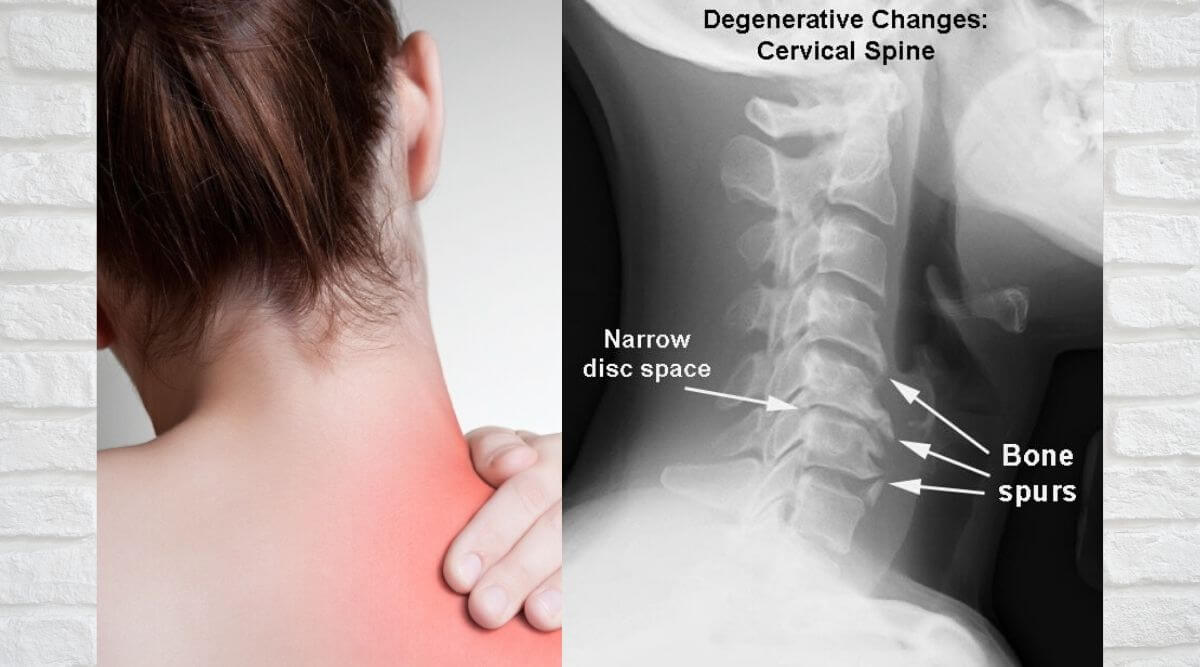Eshealthtips.com – Whether you are experiencing pain in your neck, or have an MRI scan that shows signs of degenerative arthritis, there are treatments that can help. There are several different types of treatments for neck injuries, and it can be confusing to know what is right for you.
Treatment for Degenerative Arthritis of the Neck
Several types of treatment options are available for degenerative arthritis neck. These range from non-surgical to surgical, and can be used to relieve pain and improve range of motion. The first step in determining what’s causing the pain is a physical exam. This is done by asking questions about the patient’s history, and doing a series of tests to assess sensation and nerve pressure.
The nerve roots in the cervical spine are connected through holes in the vertebrae. The nerve root may become compressed, resulting in severe pain. If the symptoms are severe, surgery may be necessary. Injections and medications are often used to relieve pain and reduce inflammation. X-rays can be taken to look at the joints and discs in the spine. An MRI can look at the joints more closely. Symptoms of degenerative arthritis neck include stiffness, pain and loss of range of motion. It can be caused by a number of different things, including bony spurs, injuries, and osteoarthritis. These symptoms can range from mild to severe and respond to nonsurgical treatment.

Neck pain may also be the result of cervical spondylosis, which is a breakdown of the discs in the neck. These disks have degenerated over time, leading to more friction between the vertebrae. The cartilage that helps the disks cushion the spine breaks down as well. This results in a shorter space between the vertebrae and increases the pressure on the facet joints.
X-rays can Show Degenerative Changes in the Cervical Spine
X-rays can show degenerative changes in the cervical spine. They can also detect bone spurs, a condition where one or more bones grow out of place. In addition, X-rays can rule out spinal tumors. Symptoms of arthritis in the neck include pain, stiffness and loss of mobility. Depending on the cause, treatments can range from over-the-counter medications to surgery. The primary goal of treatment is to prevent compression of nerves and restore function.
When it comes to diagnosing degenerative arthritis in the neck, the first thing a healthcare provider will do is ask about your history of pain and your range of motion. They will also check your reflexes and strength. The result of this exam will help determine the extent of the damage to the spine. X-rays can also be used to see arthritic changes in the spine. If the damage is severe, surgery may be recommended.

Physical therapy can be used as a treatment option for inflammatory conditions of the spine. It can involve exercises that stretch the muscles and help improve posture. Symptoms of cervical osteoarthritis can include pain, stiffness, numbness and loss of strength. There are many treatment options available. The goal is to relieve the pain, and prevent the nerve from being pressed by arthritis.
Some Non Surgical Treatments That Can Be Done
A doctor may diagnose your condition based on a physical exam, x-rays, and blood tests. They will assess your range of motion, muscle strength, and reflexes. They will also test your spine to look for arthritic changes. Nonsurgical treatment may include over the counter medications, cold compresses, and exercise. You may be prescribed anti-inflammatory drugs or muscle relaxants. Some patients may benefit from an epidural injection of cortisone to reduce swelling and relieve pain.
For more serious cases, surgery may be necessary. Depending on the severity of the pain, the doctor may prescribe stronger anti-inflammatory medications or prescription painkillers. Those suffering from neck and torticollis torsion dystonia experience abnormal movements of the head. These abnormal movements can cause pain and can be caused by various factors. Some causes include infections of the head, trauma to the neck, and scar tissue.

In severe cases, surgery is required. The condition may also require neurosurgery or brain-stimulation techniques. Patients who are experiencing persistent neck muscle spasms will likely need to be referred to a neurologist. A 22-year-old man was diagnosed with cervical dystonia. He had been experiencing an abnormal neck posture since childhood. He was referred to our clinic for evaluation. He was found to have a thin left sternocleidomastoid muscle. The muscles had atrophied. He had mild retrocollis. MRI of the neck was performed. This revealed scoliosis of the right side.
Reference :